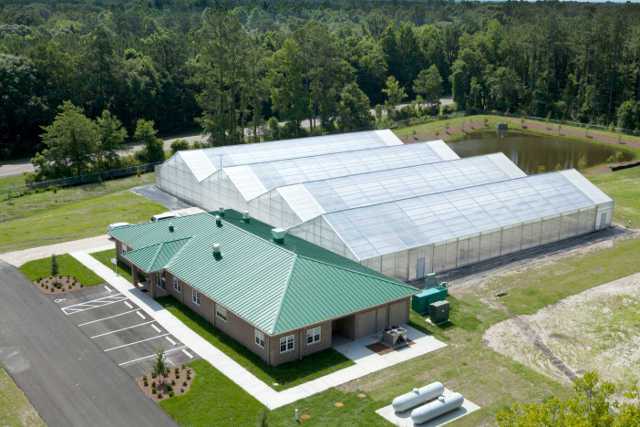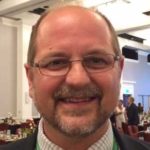Citrus Germplasm Program Gains Ground

Photo by Jeffrey Weston Lotz
Amid a supportive crowd of FNGLA Citrus Nursery Division members, industry representatives, politicians, and FDACS leadership, Florida Commissioner of Agriculture Adam Putnam recently unveiled the new Florida Citrus Repository in LaCrosse. First discussed in the August 2012 edition of “Citrus Nursery Source,” the facility was completed in May and should house plant material by the end of the summer.
The new facility will ultimately serve dual functions. This first phase will house the Citrus Germplasm Introduction Program (CGIP) currently located in the Doyle Conner Building in Gainesville. The second phase — once complete — will serve as a redundant budwood repository, storing extra copies of important commercial citrus varieties for the Bureau of Citrus Budwood Registration, and include a second laboratory for testing existing in-state citrus germplasm in need of cleanup. The facility will allow flexibility in the integration of new tools and techniques including tissue culture methods development to help the industry mitigate the impact of HLB and other citrus pathogens of concern.
Phase One
New varieties are needed to improve the competitive position of Florida’s citrus grower. Advances may come in the form of consumer-desired traits for the fresh market, enhanced characteristics needed for processing, greater levels of disease tolerance or combinations thereof.
Enhancements to CGIP have been incremental. Field planting of MCA-13 severe CTV-positive citrus in Florida was prohibited in 1998. This regulatory change stymied citrus breeding programs as many of the most promising citrus selections were already infected. It became necessary to clean plant material before moving it to the field. From 1985 to 2000, a total of 21 new varieties had been released through the quarantine and indexing program.
Recognizing the need to increase the capacity of the introduction program resulted in construction of new and larger greenhouses and an office/headhouse facility in Gainesville in 2000. Additional advances were made as large numbers of infected (CTV, canker, greening) breeding selections were introduced for cleanup. From 2004 to 2008, a total of 138 selections were released. The program currently operates with one manager, one biologist, and one greenhouse technician. All citrus plant material imported into Florida now undergoes two types of therapy and 18 months to three years of testing.
The new facility provides significantly expanded laboratory space and will be staffed with five full-time employees including a full-time molecular biologist. The improved laboratory space and headhouse, combined with an 85% increase in production area, will enable CGIP to release up to 30 foreign varieties per year, as well as numerous Florida-grown field selections in various stages of therapy and indexing. This higher production will make it possible to evaluate more varieties for suitability to Florida’s unique climatic conditions and supply the breeding teams with needed plant material. Increased throughput, with an unwavering commitment to safety, will fuel field trials, research, and commercialization. Advances in molecular biology will be directed toward the development of new methods of pathogen identification. This is a world class introduction program befitting Florida’s commitment to its citrus future.
Phase Two
The Bureau of Citrus Budwood Registration’s primary budwood repository is located in Chiefland, FL. This facility is the genetic Fort Knox of citrus germplasm. Chiefland greenhouses store clean copies of hundreds of unique varieties and selections. In 2012-2013, the Chiefland facility housed 1,322 trees of 476 selections. The facility supplied the industry roughly 528,000 budeyes, representing more than 13% of industry source material for new propagations. Though it is unlikely the Chiefland facility would ever be compromised, it is prudent to provide a backup for varieties of commercial significance in LaCrosse. Plans call for the completion of Phase Two for LaCrosse within fiscal year 2014-2015.
The Florida legislature and FDACS are to be commended for recognizing the need for enhanced capabilities within CGIP and the Bureau of Budwood Registration, and for taking the necessary steps to bring the project to fruition. LaCrosse will offer a tremendous service to nurseries, growers, and research facilities.
Winston Churchill one said: “It is no use saying, ‘We are doing our best.’ You have to succeed in doing what is necessary.” FDACS’ DPI is doing what is necessary to position Florida’s citrus industry for long-term success.










